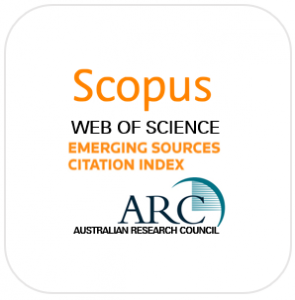Vol. 10, No. 1 (2014): 111-162
Abstract
A survey of the archaeological literature on the southern Thai-Malay Peninsula identifies 39 sites associated with chronometric dates suitable for quantitative analysis covering the Holocene, since 10,000 years ago. The essential criterion for accepting a date is an expected error of less than five percent in assessing the probability that the date refers to any of the 20 intervals of 500 years covered by the Holocene. The resulting documentation would suggest little changed occupancy levels for cave sites throughout the Holocene apart from a mid-Holocene dip. Higher levels of site occupancy are documented for the late Holocene than earlier times, due to the addition of a wide variety of open-air sites to the record. However, literal reliance on the quantitative results should be tempered with recognition that archaeological sites and their contents are prone to destruction with time or, in the case of open-air sites, preservation in contexts at inaccessible depths beneath the surface. Mid-Holocene and earlier open-air sites have been recovered only in exceptional circumstances, and so any review of the Peninsula’s Holocene prehistory should be careful not to interpret absence of evidence as evidence of absence for early open-air sites. In the case of cave sites, some allowance can be made for the destruction of suitable dating materials over time. This allowance would point to the Pleistocene-Holocene transition at around 10,000 years ago, and an interval of elevated sea-levels at around 6,500 years ago, as the peak periods for occupancy rates of cave sites. These findings are discussed in the context of the probable commencement of the Neolithic in the Peninsula at around 6,500 years ago, and current issues in relating the archaeological record to the Austroasiatic (Aslian) and Austronesian (Malay) languages spoken by the indigenous inhabitants of the southern Peninsula.
Author’s bio
David Bulbeck is an archaeologist and human osteologist who has focused his interests on Peninsular Malaysia and Sulawesi. His MA analysed Hoabinhian burials from Gua Cha in Kelantan and late Holocene burials from the Talaud Islands in North Sulawesi. Subsequently he expanded his research to cover all of the Hoabinhian and Neolithic burials from Gua Cha, supplemented by documentation of the burials from Gua Peraling and other sites in Peninsular Malaysia, and research into the dental anthropology and mitochondrial DNA of the Peninsula’s Orang Asli. For his PhD, Bulbeck investigated the rise of Makassar (southwest Sulawesi) as a city-state through an analysis of Makassar’s genealogical records and a reconstruction of the fourteenth to seventeenth century settlement patterns in Makassar’s hinterland. His postdoctoral research project documented the prehistoric origins and pre-Islamic history of iron production in Luwuq, at the northeastern margin of southwest Sulawesi. Currently he is employed with a project, funded by the Australian Research Council to researchers in his department, on the prehistory of the lowlands near Lake Towuti in southeastern Sulawesi.
Download article

